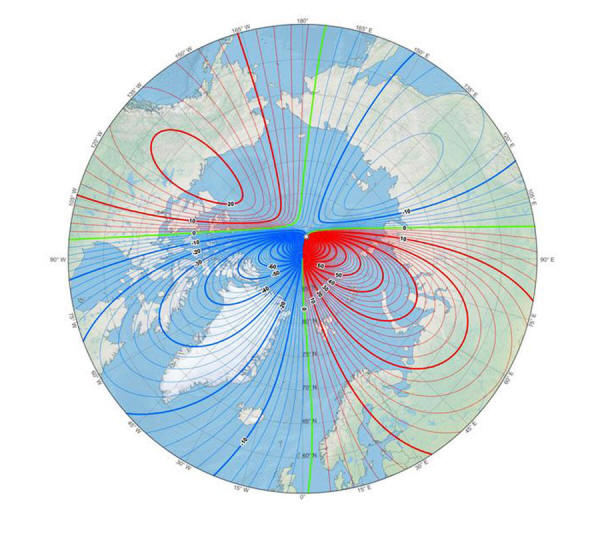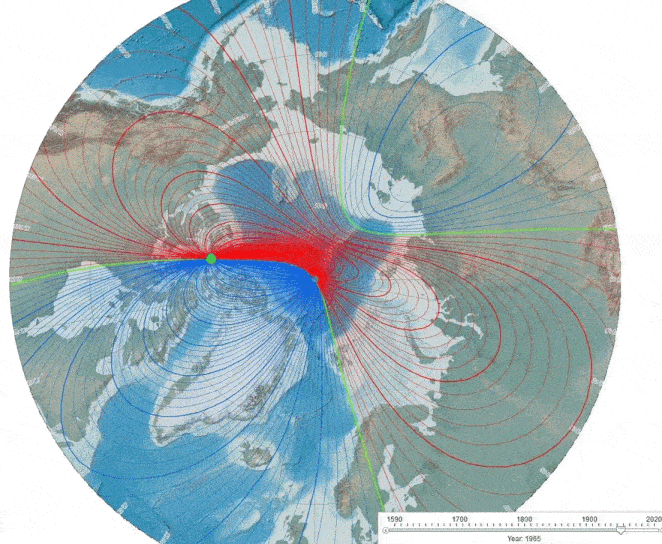|
by Trevor Nace
This map shows the new location of the magnetic North Pole (the white star).
NOAA NCEI/CIRES
What we've seen in the past hundred years is that the location of the magnetic North Pole has moved northward.
That migration of the magnetic North Pole was switched into overdrive in the past few years, causing the pole to rapidly move. The increased speed with which the magnetic North Pole has moved prompted authorities to officially update its location.
The official location of
the magnetic poles is specified by the World Magnetic Model,
which acts as the basis for navigation, communication, GPS, etc.
around the globe.
The model is typically updated every five years and was last updated in 2015. However, the recent rapid movement of the magnetic north prompted scientists to update the model early. In the recent past, the magnetic North Pole has moved 34 miles a year toward Russia.
Just a half-century ago,
the magnetic North Pole was wandering about 7 miles each
year.
Earth's magnetic pole over time.
NOAA
Specifically,
...use the magnetic poles in their daily operations from mapping to air traffic control.
On a more individual level, smartphones use the magnetic north for GPS location and compass apps.
Geologists can interpret
magnetic minerals in rocks around the world to reveal the history of
magnetic reversals on Earth.
From examining fossil
records, there is no evidence that a magnetic field reversal causes
increased extinctions, volcanic activity, etc.
Thankfully, a pole reversal in the past 'typically' takes thousands of years to flip. This will give us ample time to develop mitigating plans.
In reality, when Earth's
magnetic field does flip, who knows what planet our descendants will
be living on...?
|



